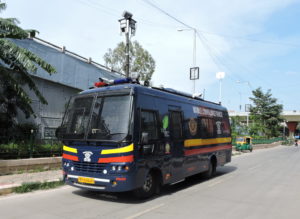NVIDIA Jetson Modules and Use Cases – Part: 2
The first part of the Blog was focused on various NVIDIA Jetson System on Modules and their hardware capabilities. This blog will look at some of the popular use cases of these SoMs. All these use cases come with a perfect balance between power, performance, and energy efficiency which is fundamental to autonomous machines, edge computing and other compute-intensive applications.
Scroll down to know more about various use cases of Jetson Platforms and jumpstart your inventiveness with these powerful SoMs.
NVIDIA Jetson Use Cases
Autonomous Systems and Platforms
NVIDIA Jetson drives innovations in a range of domains, including Autonomous Robotics, Drones, ADAS, Healthcare, and more, offering high-speed interface support for diverse sensors. These SOMs facilitate real-time image analytics, realizing a wide range of applications. Software packages such as Isaac SDK, JetPack SDK, and ROS enhance the capabilities of Jetson SoMs for multi-modal autonomous applications. The diverse software ecosystem, including NVIDIA TensorRT, GStreamer, and OpenCV, complements Jetson SoMs’ high-performance computing and real-time capabilities across various industries.
Autonomous Robots: NVIDIA Jetson is driving the new era of autonomous robotics, from security and healthcare to manufacturing, logistics, and agriculture. NVIDIA Jetson Nano, Jetson Orin, and AGX Xavier offer high-speed interface support for multiple sensors, including cameras, mmWave Radars, and IMU sensors, which enables real-time image analytics and inference at the edge. These SoMs are ideal for multi-modal autonomous robots, with advanced visual analytics that enable object detection & classification, motion planning, and pose estimation, which delivers the accuracy and fidelity to operate in factories, warehouses, and other industries. In addition, these SoMs help autonomous robots learn, adapt, and evolve using computer vision and machine learning.
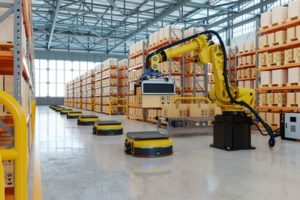
When it comes to utilizing the full potential of NVIDIA Jetson SoMs for autonomous robots, there are several software options available. NVIDIA’s Isaac SDK is explicitly designed for robotics, offering a rich toolkit for developing robotic applications and making it an ideal choice for Jetson SoM users. On the other hand, NVIDIA’s JetPack SDK, tailored for Jetson SoMs, delivers comprehensive tools, libraries, and AI development frameworks. With GPU acceleration through CUDA support and deep learning model optimization using TensorRT, it stands as a robust choice for AI applications. Additionally, the widely adopted Robot Operating System (ROS) provides a flexible and modular framework for autonomous robot development. With native support for Jetson SoMs, ROS facilitates efficient sensor integration, control, and navigation capabilities, further enhancing their autonomous capabilities.
Drones & UAVs: UAVs and autonomous drones are becoming one of the most popular gadgets amongst commercial, emergency response, and military applications due to their low cost, adaptability, and capability to manoeuvre in harsh surroundings and weather conditions. UAVs use several sensors, redundancy programs to operate autonomously. The NVIDIA Jetson TX2 series is one of the fastest and most power-efficient embedded AI computing devices in the market and supports up to six cameras at 4K resolution, making it an ideal choice for battery-operated embedded systems like drones and robots. The SoM is capable of handling various functions like navigation, image processing and classification, alerts, speech recognition, data encryption and edge inference simultaneously.
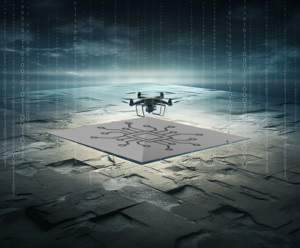
In the field of Drones & UAVs powered by NVIDIA Jetson TX2, there are some great software options like PX4 Autopilot, ROS, NVIDIA Deep Learning AI, Dronekit, and AirSim. PX4 Autopilot delivers advanced flight control, while ROS offers a flexible framework which can be customized for various tasks. Deep Learning AI empowers machine learning tasks, and Dronekit facilitates custom software. AirSim provides a safe testing environment. Jetson TX2’s multi-camera support and AI capabilities make it the top choice. Together, these software options can be used to create autonomous drones that excel in navigation, image processing, speech recognition, and edge inference, ensuring safe and reliable operations.
ADAS and Driver Monitoring Systems: The automotive industry is increasingly employing advanced technologies in the quest for safer roads and minimizing accidents. A semi/fully autonomous vehicle demands an enormous amount of sensory information analysis and real-time action with no margin for error. ADAS employs many algorithms with respect to forward collision warning, road sign detection, lane analysis and lane departure warnings, etc. To perform all these complex algorithms in real-time, there is a need of powerful compute engines. The NVIDIA Jetson SoMs like Nano, TX2, Xavier NX, AGX Xavier and AGX Orin, integrated with NVIDIA TensorRT, are ideal for designing collision, lane departure and speeding warning systems. The Jetson platforms are not only the worthiest GPU-enabled platforms for autonomous systems but also power-efficient and cost-effective.
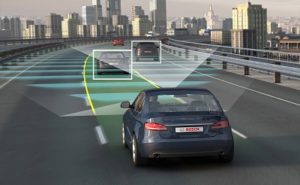
The Jetson Series can provide up to 275 TOPS performance and comes with the best in the industry machine learning and computer vision technologies. They are capable of processing immense amount of data from multiple cameras and sensors that help to give accurate driving situations in real-time. These SoMs also help in deep head pose estimation through 2D or 3D depth data through a Convolutional Neural Network (CNN), real-time traffic road signs detection by using computer vision algorithms, and real-time prediction of automotive collision risk warnings and avoidance with the help of quick visual AI systems processing.
In the world of ADAS and Driver Monitoring Systems powered by NVIDIA Jetson SoMs, software solutions play a crucial role. NVIDIA’s DriveWorks SDK, OpenCV, TensorRT, ROS, DeepStream, and NVIDIA Isaac SDK lead the pack. DriveWorks offers a comprehensive toolkit for automotive systems, while OpenCV handles computer vision tasks. TensorRT optimizes deep learning models for real-time predictions. ROS provides a modular framework, and DeepStream is ideal for analysing data. For robotics based ADAS, NVIDIA Isaac SDK offers navigation and mapping. Jetson SoMs, from Nano to AGX Orin, bring computational power and ML support to the table. Together, these software enables complex algorithms, real-time understanding of the environment, and contribute to safer roads.
Edge Camera: NVIDIA Jetson Nano, Xavier NX, and TX2 series modules are good choices for building IoT-enabled embedded vision systems and edge cameras due to their high-performance and low-power computing capabilities. These modules are ideal for processing complex data at the edge and running advanced AI workloads. The NVIDIA Jetson modules come with powerful graphics processors and AI cores that provide no limits to the implementation of versatile AI-based edge computing systems.
For Edge Cameras on NVIDIA Jetson SoMs, diverse software solutions are available. GStreamer is ideal for multimedia tasks, OpenCV offers GPU-accelerated computer vision with the help of the graphics card, NVIDIA DeepStream powers real-time analytics, Python and TensorFlow enable AI, and ROS caters to robotics. Jetson’s powerful hardware supports real-time image processing, AI analytics, and IoT. Your choice depends on the requirements, but these options deliver versatile edge computing.

Healthcare Devices: High-resolution medical imaging and its analysis are critical elements of modern healthcare. The biggest challenges to developing advanced healthcare and medical systems are high-speed low-latency data transfer, real-time analysis of the massive data and inference of actionable insights. The NVIDIA Jetson Platforms address all these concerns and help accelerate the development of next-gen medical applications that aid advanced imaging, faster diagnosis, derive the best treatment procedures and enhance surgical processes. The multiple CSI Camera support, USB 3.2, GigE (up to 10GbE), and multi-mode DisplayPort among others, facilitate high-speed data transfer between various sensors, processor, and UI for superior operational efficiency. The Jetson SoMs support H.265 and H.264 video encoding and decoding (up to 8K/30 or 4K/60), ensuring low-latency video transmission and display. These SoMs offer end-to-end software framework, datasets, and domain-optimized tools for modular and scalable AI-based healthcare product deployment.
In the world of Healthcare Devices powered by NVIDIA Jetson SoMs, a range of software options are available, all geared up to tap into their high-performance computing and real-time abilities. NVIDIA Clara, designed for healthcare, provides imaging and AI tools. MATLAB’s Medical Imaging Toolbox, with the support of Jetson’s GPU, enhances tasks related to images. TensorFlow Medical Imaging offers ready-to-use models for medical applications that use AI. PyTorch brings deep learning flexibility for custom neural networks. NVIDIA’s Deep Learning Accelerated Libraries make AI processes even faster. Jetson SoMs, with their computational abilities and imaging support, are ideal fit for healthcare devices. The software choice depends on the device’s needs, paving the path for advanced medical systems.
Vision Analytics Applications
NVIDIA Jetson powers diverse Vision Analytics applications, with a focus on Object Detection & Classification. Jetson Nano supports TensorFlow and PyTorch, making it ideal for AI vision tasks and higher versions like Xavier NX and AGX Xavier enhance tracking capabilities. Jetson TX2, Xavier NX, and AGX Xavier with Metropolis, OpenALPR, DeepStream, Pix4D, and QGroundControl, excel in real-time object detection makes them ideal for applications such as Smart Waste Management, Intelligent Traffic Management Systems, Aerial Imaging, etc.
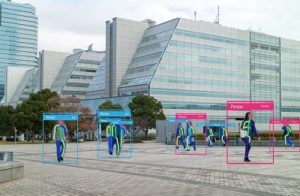
Object Detection & Classification: There is an exponential growth in object detection and classification computing due to the developments in artificial intelligence, connectivity, and sensor technologies. The NVIDIA Jetson Nano supports Machine Learning frameworks like TensorFlow, PyTorch, Caffe/Caffe2, Keras, MXNet, etc., making it an ideal platform for running AI vision tasks and AI-based computer vision applications. Jetson Nano is ideal for implementing applications such as Edge Camera, Warehouse Robots, Digital Signage, etc., demanding object detection and classification, segmentation, speech processing, image recognition, and object counting. If the application demands tracking and labelling of a detected object, developers can choose a higher version of the NVIDIA Jetson platform, like Xavier NX, Orin or AGX Xavier.
When it comes to object detection and classification on NVIDIA Jetson SoMs, two standout software options are TensorFlow and PyTorch. TensorFlow, a widely-used deep learning framework, offers robust support for these tasks. It simplifies the process with pre-trained models available through the TensorFlow Object Detection API, and it can be fine-tuned and optimized for Jetson GPUs to ensure excellent performance. On the other hand, PyTorch, another popular deep learning framework known for its flexibility and dynamic computation graph, provides pre-trained models and libraries tailored for object detection and classification. Jetson users also have the option of Jetson-specific builds, which maximize performance while harnessing PyTorch’s capabilities. These two software options provide powerful tools for addressing object detection and classification challenges on NVIDIA Jetson SoMs.
Intelligent Traffic Management: Robust, accurate, and secure traffic management systems are vital to reducing congestion and minimizing highway and city accidents. Intelligent traffic management systems help in real-time detection and classification of vehicle type, estimation of speed, queue length and vehicle flow, and traffic pattern analysis, among others. NVIDIA Jetson TX2 and Jetson Xavier NX platforms are ideal for real-time traffic management solutions because of their high computational power to fulfil specific neural network requirements, multiple 4K camera support, high-speed video encoding/decoding, real-time data communication with remote devices and the cloud network. These modules offer 10/100/1000 BASE-T Ethernet for low-latency sensor operations and power over Ethernet.
In the world of Intelligent Traffic Management, powered by NVIDIA Jetson SoMs, a versatile collection of software stands ready. NVIDIA Metropolis, an IoT platform that utilizes deep learning for real-time object prowess, while OpenALPR is ideal in license plate recognition and works fast on Jetson traffic systems because of its GPU-optimized. MATLAB is good for traffic simulation, image processing, and deep learning, especially when paired with Jetson’s powerful GPU support. NVIDIA’s TensorRT turbocharges deep learning models for traffic analysis. For controlled experimentation, DeepTraffic offers traffic simulation on Jetson SoMs. These software tools works well with Jetson’s strong computing abilities, camera support, real-time capabilities, and connectivity. All of these can help to develop intelligent traffic solutions tailored to fit specific needs.

Smart Waste Management: Waste is a surging problem for many industries. NVIDIA Jetson Modules are ideal for building smart waste management systems. The object detection and classification capability of Jetson modules helps make trash-versus-recycling decisions in an industrial environment. Equipped with high computing power, CSI Cameras and advanced image analytics powered by AI algorithms, Jetson modules can be used to build autonomous Waste Management Systems that can identify and sort infinite number of items. The AI algorithms aid the system in classifying and categorizing wastes and directing them to respective bins. Integration of digital weighing scales helps the system to easily measure, quantify and keep a detailed track of waste segregated.
In the field of Smart Waste Management, powered by NVIDIA Jetson SoMs, software options like OpenCV, TensorFlow, PyTorch, NVIDIA DeepStream, and ROS bring high-performance capabilities. OpenCV can detects and analyse waste items, TensorFlow can categorize, PyTorch can customize the waste tracking according to the needs, DeepStream accelerates waste detection, and ROS deals with waste management using robots. Jetson SoMs, with their strong computing power and support CSI Camera, are an ideal match for this task. These software tools work together to create autonomous waste management systems, boosting efficiency in identifying, categorizing, and managing waste items for improved industrial waste management.

Aerial Imaging and Surveillance: The aerial imaging and surveillance are finding several applications in domains such as Military, Survey, Forestry, Search and Rescue, Oil & Gas, Mining, Agriculture and Critical Infrastructure Protection among others. The NVIDIA Jetson Platforms are one of the finest sets of processing engines available in the market for building AI-powered Aerial Imaging solutions. High computing power, advanced graphics processing, deep-neural computing, and integration of modern AI workloads provide unparalleled image processing capabilities for these platforms. NVIDIA Jetson Tx2 and AGX Xavier are ideal for designing aerial imaging solutions that offer accelerated image processing, mapping, detection, segmentation, and tracking.
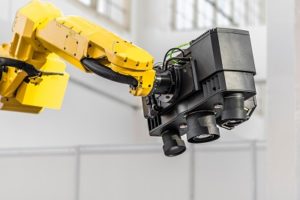
In the world of Aerial Imaging and Surveillance, where NVIDIA Jetson SoMs provide the power, there are multiple software options are available like OpenCV, TensorFlow, NVIDIA DeepStream, Pix4D, and QGroundControl. OpenCV is perfect for real-time object tracking, while TensorFlow offers tools and ready-made models for custom AI solutions. DeepStream makes it possible to process images in real-time for aerial surveillance, Pix4D can transforms images into 3D maps, and QGroundControl helps manage drone missions. All these software options work together to create efficient AI systems, which can revolutionize applications across military, agriculture, and infrastructure protection.
Automated Inspection: NVIDIA Jetson AGX Xavier can do miracles in the field of automated inspections and can cater to a wide range of industries and requirements. The support for multiple 4K resolution cameras, advanced machine-learning inference chores help automate inspection and identification of the smallest of defects or differences. With the help of machine-learning models, advanced AI computing, visualization, data analytics, and high-resolution simulation, Jetson AGX Xavier-powered automated inspection systems can manage routine and dangerous inspections with precision and speed.
In the world of Automated Inspection with the help of NVIDIA Jetson AGX Xavier, there is a set of great software tools available. OpenCV, with its speedier processing using GPUs, spots defects in real-time. NVIDIA’s deep learning package helps train models to detect faults. MATLAB uses advanced inspection algorithms. Cognex VisionPro is super precise for manufacturing, and MVTec Halcon is ideal for industrial inspection. These software solutions can be assembled together to create efficient AI-powered inspection systems, revolutionizing quality control across industries.

Table 2: NIVIDIA Jetson Applications
Conclusion
In a world of data-driven decision-making, the demand for AI-powered solutions will continue to grow and flourish. The NVIDIA Jetson Platforms’ flexibility, compact footprint, and high computing power offer endless possibilities to developers for building embedded systems and AI-powered devices. They offer power-efficient performance to the users to create software-defined autonomous machines.
Mistral is a Member of the NVIDIA Partner Network, and our solutions facilitate accelerated product development, prototyping and reduce time to market. Our team has unparalleled expertise and design competency in offering custom Carrier Boards, Development Platforms and Application Boards based on Jetson System on Modules. Mistral also offers feature-rich, performance-oriented off-the-shelf Carrier Boards and AI-Sensor Fusion platforms compatible with the Jetson Nano, Jetson Xavier NX and Jetson T.X2 NX and Jetson Orin NX (Available Soon) SoMs. To know more, visit mistralsolutions.com/neuron.


